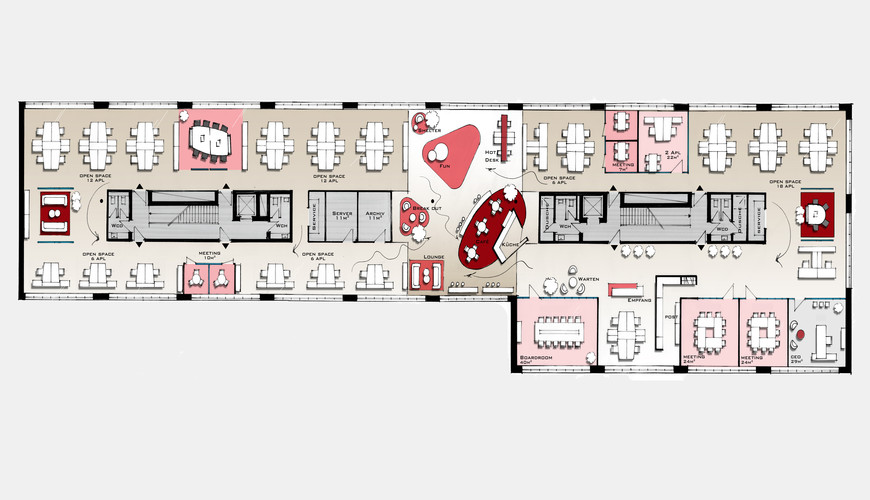INSPIRATION
How productive are satisfied employees who look forward to their work and their projects every day? And how productive are employees who spend their days at work dissatisfied? So far, no study in the world has been able or willing to approach this question. If we assume that a committed partner is able to work at 120% of their potential out of sheer motivation, while someone who is stuck in old-fashioned personnel structures and a hostile working environment can only fulfill 80% of their potential, then the solution for a company that wants to be successful is clear – they need to invest in employee well-being.
WELL-BEING IN THE OFFICE
People who enjoy their work and feel good in their workplaces boost company performance. Forward-thinking managers are becoming increasingly aware of this fact. For example, reducing a working area to a desk, a chair, and a shelf is definitely out. Studies by Steelcase and WSA have shown that workers spend 53% of their working time on average sitting at their own desks. Not to mention the fact that every person is unique, and everyone has their own working habits. Modern office spaces and communication environments that support different styles of working are the key to success. Every detail must be taken into account. Factors such as light quality, air quality, and noise pollution are as decisive as the interior design and the availability of quiet, private spaces.
SHIFTING FOCAL POINTS
Focal points are increasingly shifting: 80% office space and 20% communication environment is considered old fashioned. Nowadays, many companies have designed their working spaces to be 60/40 or even 50/50. Meeting rooms have been replaced by meeting zones, and, despite increasing transparency, structured spatial design is still required. These “informal” communication environments are the perfect place to have short, efficient meetings. People leave these areas once they no longer have anything to contribute to the discussion, or else they simply pop in when they have something to say.


